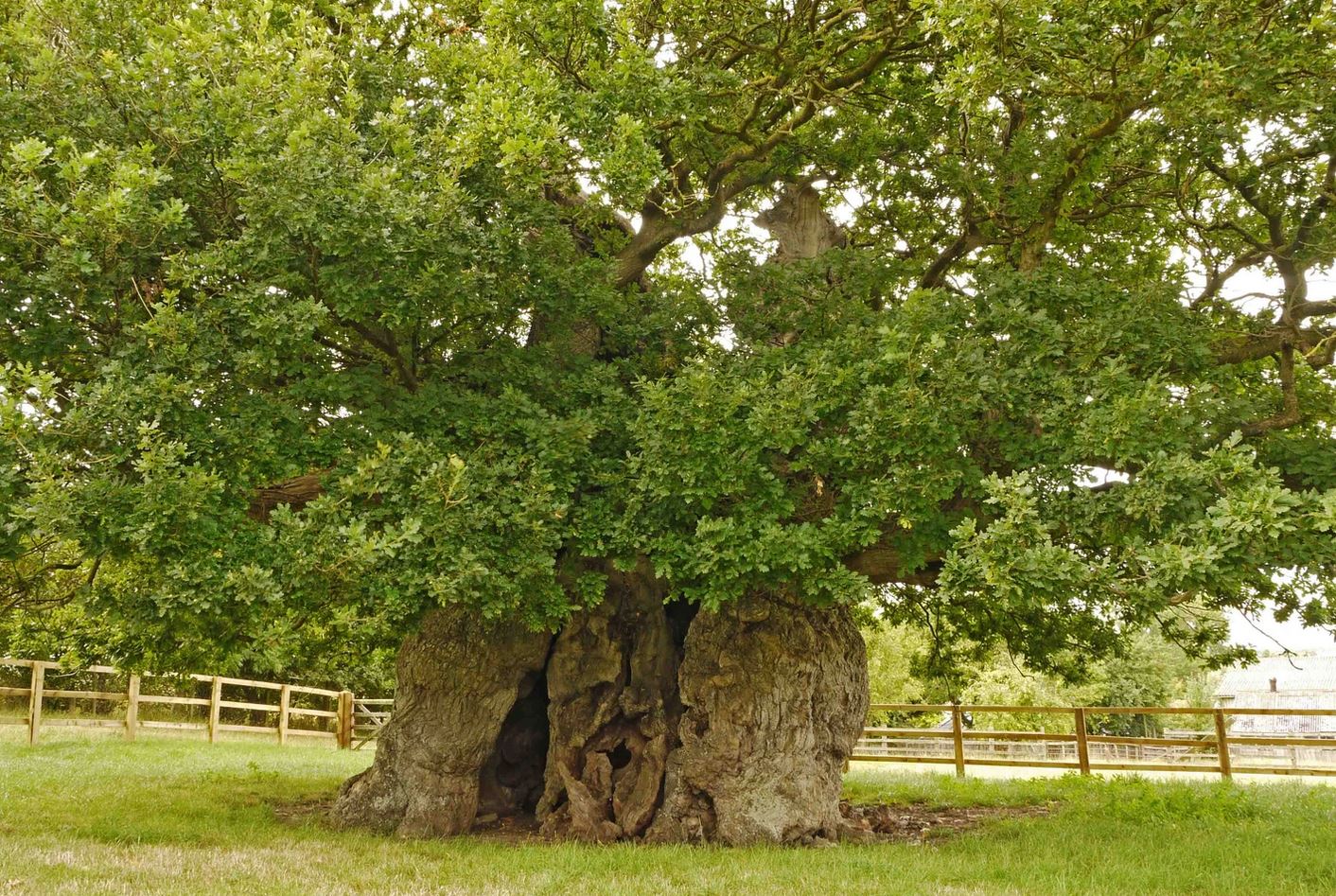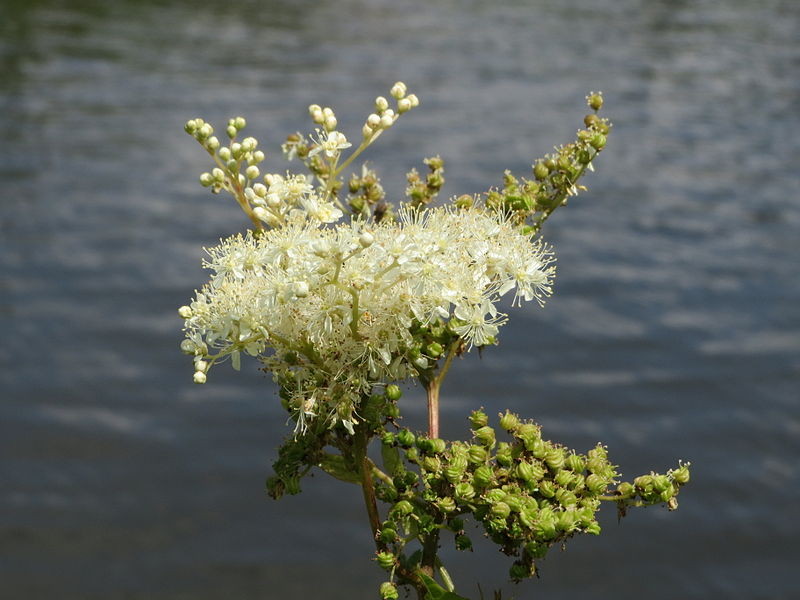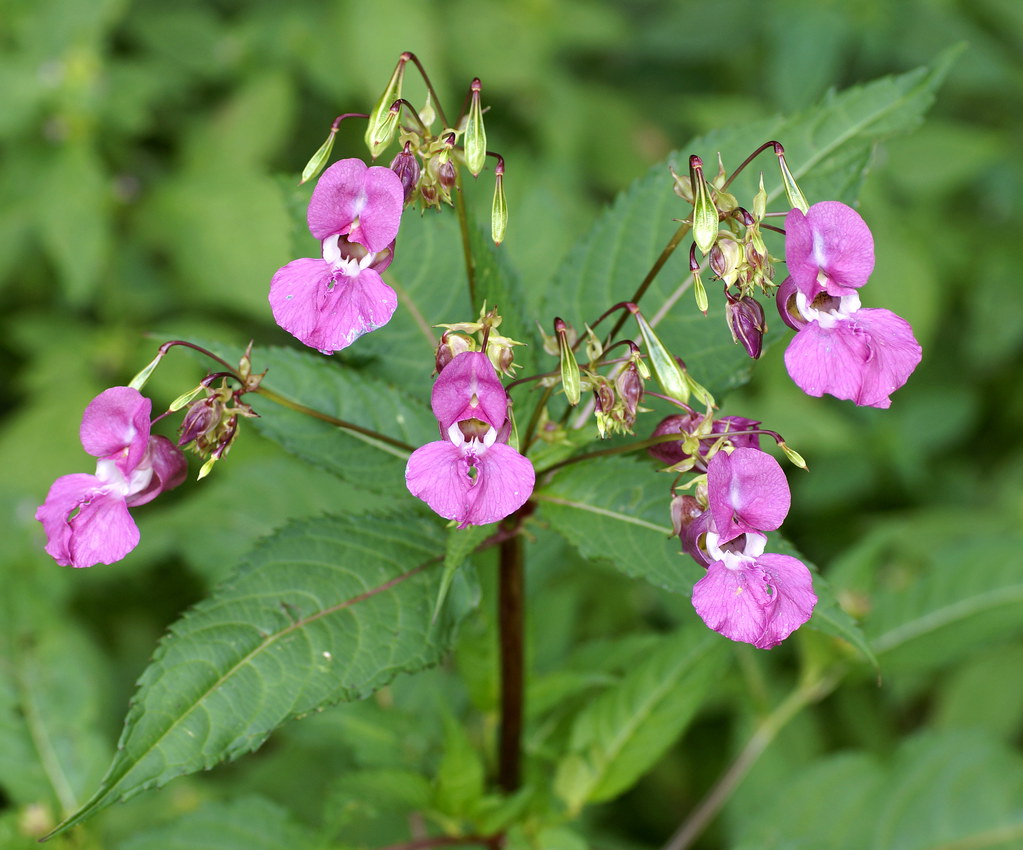
Britain's Ancient Trees - The Common Oak Tree Revisited
Botanical name: Quercus robur
Common name: Common Oak, European Oak
Physical appearance: A large, broad leaved, deciduous tree, growing up to 40 or more metres in height. The crown spread can equal the height of the tree, as can the root system. The lobed leaves are very distinctive and can therefore help identify the species. The Oak has a silvery/iron like quality and is often very gnarled in more mature examples.

(above: The Bowthorpe Oak)
Best places to find: Particularly in the UK, Oak was planted widely as it was a key material in ship building. It can now be found practically anywhere in the country. Common to much of Europe, particularly, central and northern regions.

(above: The Major Oak)
Edible parts: The acorns can be eaten but require a huge amount of processing before they can be consumed. To do this, you would need to shell the nuts (no easy task), then grind them, and then subject them to hours or even days of soaking in water (this is done to “leech” out the poisonous, bitter tasting tannins that exist within the acorns). Once dried, the grinds can be roasted to produce a kind of acorn flour or alternatively an acorn based coffee. With regards to calorific content, it does not offer great returns from energy imputed via processing.

(above: The Marton Oak)
Time of year: Acorns can be collected from early autumn as can the mushrooms associated with Oak (i.e. those that often grow under and around Oak trees).

(above: An Oak leaf)
Life cycle: Starts off as an acorn, which is essentially a seed pod containing a single seed. As the seed begins to germinate, it develops a “tap” root which will anchor the tree for the rest of its life. Once established and spring is imminent, the seed begins to send up a shoot. As the shoot grows, it pushes its way up through the leaf litter and begins producing its first leaves, ready for photosynthesis. At this stage, the Oak tree is considered a seedling. The next step in an Oak’s develop occurs at around 50 years of age when they start producing good crops of acorns. Oaks reach full maturity at around 150 years of age. Upon reaching full maturity, the Oak will reach a height of around 40 or more metres. Its crown will be spread over the equivalent distance as will its root system. The next mile stone occurs at around 700 years of age. At this stage, the tree has reached old age and produces far fewer acorns and grows at a significantly slower rate. At c.1000 years of age, an Oak will be reaching the end of its life cycle. At around this age in the Oak’s life cycle, parts of the tree begin to die back and fracture. Once sufficiently weakened, wind is often a factor in the final toppling.

(above: The Buttington Oak - now fallen as of 2017)
Point of interest: An Oak tree can produce up to 10,000,000 acorns throughout its life span. Particularly in the UK, many of these acorns are eaten by squirrels or buried for consumption at a later date. Every Oak tree will support a substantial biomass.

(above: An acorn)
Oak Apples: Know as Oak Gall, these apple-like growths appear on Oak trees as a result of the actions of Gall Bees. The growth houses a single female specimen until it matures into an adult. The Bee will feed on the secretions of the Oak for sustenance. During the Medieval period of history, Oak Gall was the prime source of writing ink. The Oak Gall would be broken up/ crushed and mixed with water, gum Arabic and possibly charcoal to produce the ink. The vast majority of manuscripts written at this time would have used Gall ink. It could therefore be argued that Gall ink had a significant impact on human history.

(above: An Oak Apple or Gall)
The oldest Oaks: The UK is home to the vast majority of the most ancient specimens of Oak in Europe. With approximately 85% of Europe’s most ancient Oaks being located in England.
Examples:
- Bowthorpe Oak – Manthrope, Lincolnshire, 12.3 metres trunk width, approximately 1000 years old.
- Marton Oak – Marton, Cheshire – 17.7 metres trunk width, approximately 1200 years old.
- Major Oak – Nottinghamshire, Sherwood Forest (biggest Oak overall in the UK) 800-1200 years old. Reputedly accommodated Robin hood and his Merry Men within its trunk.
- Buttington Oak – Reputedly planted to commemorate a Viking defeat in 893 A.D. The Vikings who had settled there were ultimately defeated / driven out.
It is thought that England is home to at least 3200 Oak trees that are considered “ancient”.
Photos courtesy of Alex Jane, via Wikipedia Creative Commons Attribution
The Woodland Trust (via Julian Hight https://www.woodlandtrust.org.uk/trees-woods-and-wildlife/british-trees/a-z-of-british-trees/english-oak/)
Wanderlust - (https://www.wanderlust.co.uk/content/oldest-trees-in-the-uk/)
Written by Big D


